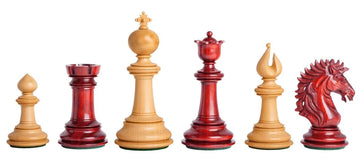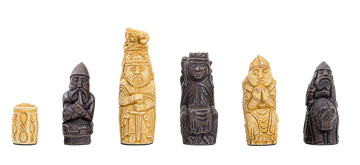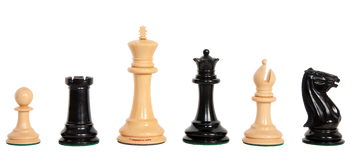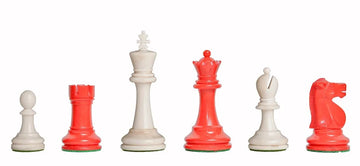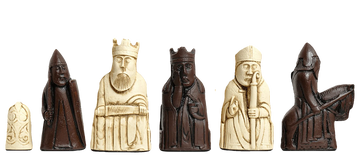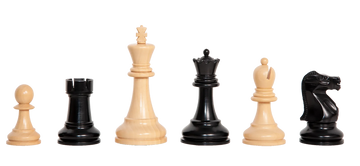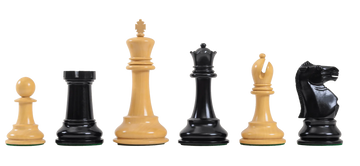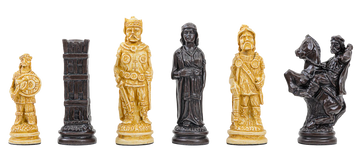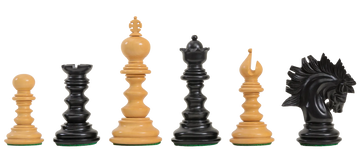Your Complete Guide To The History of Chess Piece Names
From the moment chaturanga emerged on the Indian subcontinent, players began writing the story of chess not just in moves, but in names. The evolution of chess piece names tells a sweeping tale of conquest, translation, and reinvention.
Each piece passed through cultures and languages, shedding one identity for another. People adapted its meaning and power to reflect the politics, religions, and imaginations of their time.
In this guide, we explore the origins, transformations, and meanings behind the chess piece names we use today.

How Chess Piece Names Crossed Continents
Chess began as chaturanga in India around the 6th century CE — a game of strategy shaped by a fourfold army: infantry, cavalry, elephants, and chariots. These ancient divisions weren’t just military formations. They became the blueprint for the chessboard’s familiar lineup: pawns, knights, bishops, and rooks.
As the game crossed borders into Persia and the Islamic world, chaturanga became shatranj.
Its mechanics changed slowly, but its pieces started shedding their Sanskrit titles for Persian and Arabic ones. And when chess marched into medieval Europe, it wasn’t just the rules that shifted.
Names, symbols, and meanings evolved to reflect entirely new worlds. War elephants gave way to bishops. Chariots became towers. A king’s minister became a queen.
The transformation was profound.
This wasn’t just a game adapting to local taste — it was a cultural migration encoded in vocabulary. Each language added its own layer of interpretation, creating a living map of how civilizations imagined war, power, and order.
Scholars like H.J.R. Murray and Marilyn Yalom have traced this journey in detail in A History of Chess and Birth of the Chess Queen.
Meanwhile, primary sources like the Shahnameh and Libro de los Juegos offer a rare glimpse into these chess piece names as they were understood and used in their own time.
Let’s follow the trail of each chess piece — what it was, what it became, and what that says about the people who played the game. These aren’t just moves.
They’re translations of power, culture, and belief — etched into the chess piece names that have lasted for centuries.
Pawn – The Foot Soldier of the Board
The pawn might seem like the weakest piece in the game of chess, but its name and history tell a deeper story of resilience and transformation.
In chaturanga, players called pawns padāti, meaning foot-soldier. In Persian, this became piyāda, which meant the same. Arabic translated it as baidaq, continuing the tradition.
The English word "pawn" stems from Old French peon, meaning pedestrian or footman, itself from Latin pedonem (from pes, foot).
This consistent etymology across cultures reinforces the pawn’s symbolic role as the humble infantry. The chess piece names of foot soldiers around the world reflect their expendable role and critical tactical function.


During the Middle Ages, Jacobus de Cessolis reimagined pawns as representatives of various social classes.
His moral allegory, The Game and Playe of the Chesse, gave each pawn a civilian profession — merchant, farmer, doctor, and more — depending on its placement on the board.
Originally, pawns could only advance one square at a time and could promote only to a weak advisor. But in 15th-century Europe, reforms gave pawns the two-square opening move, the en passant rule, and the ability to promote to any piece. These changes made pawns strategically valuable. Still, the word "pawn" persists in common language to describe someone expendable.
Knight – The Leaping Cavalry
No chess piece has preserved its core identity as well as the knight. It has always moved in an L-shape, jumping over other pieces. Sanskrit named it aśva (horse), Persian called it asp, and Arabic used faras, all meaning horse.


Many modern languages follow suit: Spanish caballo, Italian cavallo, Russian kon’, Polish koń. German says Springer (jumper), French uses chevalier (knight), and Hungarian toggles between huszár and ló.
English chose “knight,” a noble title instead of an animal. Derived from Old English cniht, meaning servant or youth, the term evolved into a symbol of chivalry and mounted warfare. Despite its status as a minor piece, the knight remains tactically critical.
Unlike other chess piece names, the knight’s identity faced little cultural distortion. From India to Iceland, the horse's role as cavalry made this piece easy to adopt. Its unique ability to leap over obstacles reflects its battlefield agility.
Bishop – From War Elephant to Wise Man to Fool
No chess piece has undergone more drastic reinterpretation than the bishop. In India, it was the hasti or gaja — a war elephant. Persians named it pīl, Arabs called it al-fīl. But elephants were foreign to Europe.
Languages adapted creatively. Russians retained the elephant identity with slon. Spanish uses alfil. German chose Läufer (runner), Dutch uses loper, Polish goniec (messenger), and Serbo-Croatian lovac (hunter). French misheard alfil as fou, turning the piece into a “fool.”


Italian players picked alfiere (standard-bearer), while English eventually named it "bishop," perhaps inspired by ecclesiastical imagery. The 12th-century Lewis chessmen show bishops wearing mitres, indicating this association.
Originally, the bishop (alfil) moved two squares diagonally, leaping over others. This limited mobility changed in 15th-century Europe. The bishop began to move any number of squares diagonally, increasing its power and strategic use.
These rule changes sparked reinterpretations of the chess piece names. The elephant became a clergyman, a courtier, or even a trickster — each culture projected its own metaphor onto the diagonal path.
Rook – From Chariot to Castle to Cannon
The rook began as a ratha — a chariot — in chaturanga. Persians called it rukh, Arabs pronounced it rukhkh. In medieval Europe, the word was reinterpreted. Italian rocco sounded like rocca (fortress). Spanish and French followed with torre and tour (tower). German says Turm, and Polish wieża.
English kept the original name — rook — but informal usage still calls it a “castle.” The visual change followed suit, as sets began to depict the piece as a turreted tower.
In Russia and Armenia, the rook became a boat — ladya and navak. Balkan nations under Ottoman influence called it top (cannon). The rook’s imagery changed, but its movement didn’t. It still moves any number of squares vertically or horizontally.

Medium - Earthenware; glazed from MET collection

The rook’s role as a siege engine persists. The introduction of castling in Europe further emphasized the rook’s protective symbolism. Some early figurines portrayed rooks as guards or wardens, reinforcing their association with defense and authority.
Among all chess piece names, the rook’s dual identity as fortress and cannon stands out.
Queen – From Counselor to the Most Powerful Piece
The queen wasn’t always the strongest piece. In chaturanga, it was the mantri (minister). Persians called it farzīn, Arabs firzān, or wazīr — all meaning counselor. It could move only one square diagonally.
In medieval Europe, players misunderstood the Arabic term as vierge (virgin) in Old French. They soon linked the piece to the Virgin Mary and reimagined it as a queen. By the 13th century, French players used reine and dame. Spanish and Italian adopted dama and donna.

The English adopted "queen" by the late Middle Ages. Around 1475, reformers gave the piece the power to move any number of squares in any direction. This transformation made it the most powerful piece on the board.
The evolution of this piece reflects both linguistic accident and societal change.
Authors like Marilyn Yalom argue that the growing political roles of queens in medieval Europe helped cement this change in both name and function. The queen quickly rose to define modern chess strategy — and the chess piece names that dominate endgames.
King – The One Constant
The king has always remained the king. Chaturanga used rājā. Persian and Arabic used shāh. Latin used rex, French roi, German König, Russian korol’. English followed suit.


The name even shaped the language of victory. “Check” comes from shāh (king), and “checkmate” from shāh māt — the king is helpless. These chess piece names spread into every major European language.
The king’s movement — one square in any direction — has never changed. Castling was a European innovation that allowed the king to leap two squares toward a rook for safety. It was the only major adjustment in the king’s history.
Every part of chess revolves around the king. He holds the board’s center of gravity. While his mobility is limited, his symbolic importance defines the rules of chess.
Conclusion
The history of chess piece names reveals the journey of chess itself. From Indian courts to Persian palaces, Islamic libraries to European monasteries, each piece reflects layers of cultural translation. War elephants became bishops and fools; chariots turned into castles and boats; humble footmen learned to promote into queens.
Linguists, historians, and players alike find meaning in the names we give these pieces. Primary sources like the Shahnameh, Libro de los Juegos, and The Game and Playe of the Chesse show the terms in transition. Scholars like H.J.R. Murray and Marilyn Yalom decode those transitions and what they say about the societies who made them.
The next time you set up a chessboard, remember: these aren’t just figures — they’re fragments of a global epic. Each name carries history, identity, and imagination. The chess piece names we use today connect us to centuries of evolving culture and timeless strategy.

